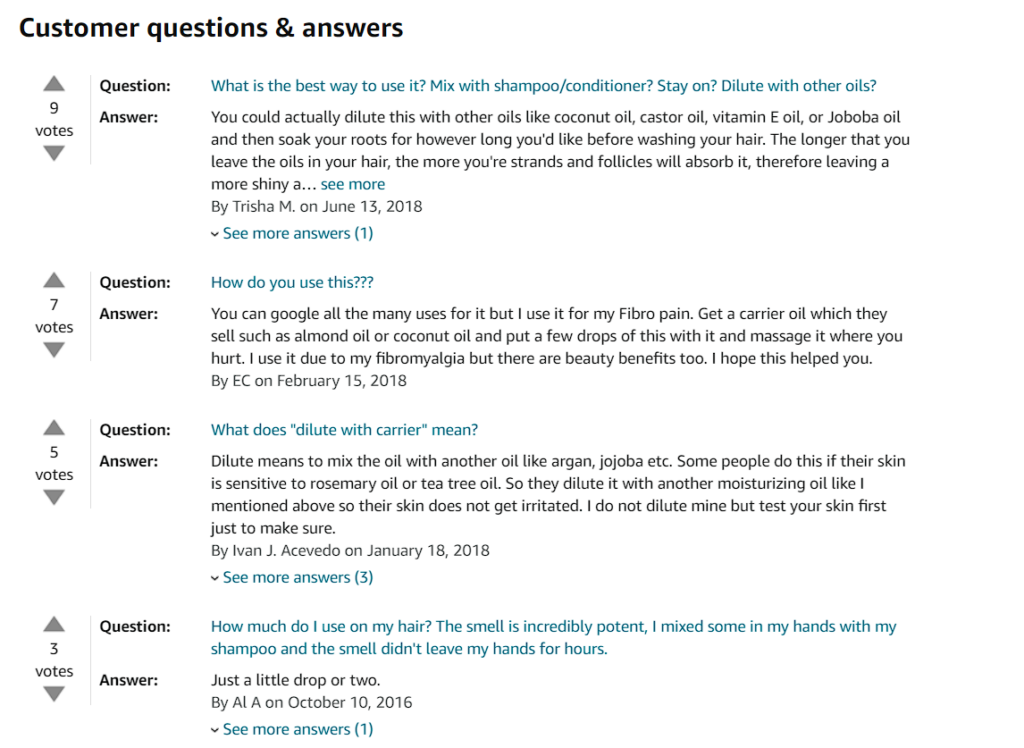
Conducting amazon review analysis provides in-depth insights into how customers feel about a specific product.
Sellers can use this information for product research, competitive analysis, and to improve the overall customer experience.
This article will cover how to conduct customer review analysis for your Amazon products–and competitors’ products.
Let’s get started.
Table of Contents
What is Amazon Customer Review Analysis?
Amazon customer review analysis helps turn qualitative, unstructured data into quantitative information. Because user-generated content can be millions (or billions) of data points, customer review analysis uses artificial intelligence (AI) and machine learning (ML) to analyze and pull insights at a faster pace.
Amazon sellers can uncover what sellers appreciate about their products, where and when there are issues, and what their customers are looking for.
While Amazon sellers could manually look at a handful of reviews, analyzing multiple products with hundreds or thousands of reviews is only possible using customer review software.
What is Natural Language Processing in Review Analysis?
Review analysis software uses Natural Language Processing (or NLP) to understand customer reviews and pull key insights from the content.
NLP “combines computational linguistics—rule-based modeling of human language—with statistical, machine learning, and deep learning models. Together, these technologies enable computers to process human language in the form of text or voice data and to ‘understand’ its full meaning, complete with the speaker or writer’s intent and sentiment.”
It can identify:
- Bag-of-words: AI detects the frequency of positive and negative words in a review to identify the overarching sentiment of the reviewer. This is the most simplistic NLP technique.
- Term Frequency-Inverse Document Frequency: In this technique, AI determines the importance of words in your article depending on how frequently they are mentioned. It can be an intensive process that still leads to rather simplistic results.
- Word Embeddings: This is an approach that determines the sentiment of a review based on a vector representation of language data and how frequently certain words appear.
- Word2Vec: This approach is especially powerful because it can calculate for misspelled (or different spellings of) words. It works off of an artificial neural network model, which also uses vectors to classify and analyze what customers have to say.
Why is Review Analysis Important for Amazon Sellers?

When customers take the time to leave a review, they’re sharing what they feel is essential for other shoppers or the seller to know about a product, brand, or shopping experience.
Understanding this communication to its fullest extent is important for product and service improvements and customer retention and loyalty levels.
Review Analysis for Your Products
Review analysis reveals important information, like the type of person purchasing your product, what they’re primarily using it for, how it can be improved, and what its strengths are. It also reveals what customers think about your business and brand as a whole.
Reviews may also offer inspiration for where you can take your business next. Customers who love your product may leave details that lead you to identify other products that complement the items they’ve already purchased from your store.
Completing regular amazon review analysis is also key to understanding who is purchasing your products. With this information, you can better target your advertising and optimize your listing to reach more shoppers in this demographic.
Review Analysis of Competitors’ Products
Review analysis can also be used to uncover what your competitors are doing well–or where they’re falling short. Then you can use this data to improve your products or product listings. .
Are customers disappointed by a competitor’s shipping times? Emphasize quick shipping on your product listing. Do they love the packaging? Spruce up your product presentation for a quick win.
Review analysis of competitors’ products can also reveal rare keyword searches, opening you up to new demographics and allowing you to optimize your listing’s keywords further.
How Amazon Customer Review Analysis Works
There are a few options for conducting Amazon review analysis.
1. Manual Analysis
Manual analysis may seem like a good fit if you are just starting on Amazon and only have a few reviews. You can read through what each customer said and note what they liked or did not like about the product.
However, once you collect more reviews, this process becomes time-consuming and less helpful. It’s also challenging if you’re conducting a review analysis of high-performing competitors that have hundreds (or thousands) of reviews.
It’s also incredibly challenging to manually synthesize patterns and trends.
2. Artificial Intelligence
Using AI technologies makes review analysis as simple as a click of a button. AI can automatically predict and identify customer trends in a fraction of the time that it takes humans.
3. Sentiment Analysis
Sentiment analysis is another central aspect of analyzing customer reviews. Sentiment analysis uses NLP and AI to understand the feelings and opinions of customers leaving Amazon reviews. It automatically tags the unstructured data (customer words within reviews) so it can be processed quickly and efficiently.
Sentiment analysis primarily focuses on polarity (the distribution of negative and positive reviews) and subjectivity (whether sentences are an opinion or facts).
This can help organizations understand where and when customers are having a negative experience while using their product or service. Businesses can see how their brand or specific products are trending over time. They can see if overall customer sentiment is becoming more positive, more negative, or staying steady.
Sellesta’s review analysis feature does this all automatically. You can filter reviews by aspect and sentiment to see what customers are saying about any product on Amazon. The AI analyzes key tags and the emotional tone of key tags to break down what customers really think about your competitors’ products.
4. Customer Questions
If the review analysis process draws your attention to issues with your product, the customer question section is also a great opportunity to address or acknowledge any weaknesses in the product or product descriptions.
In “Customer Questions,” both the seller and previous customers can answer questions posed by potential (or current) customers about the product. It’s important to closely monitor this section because Amazon sellers can no longer comment on product reviews. That means this section is the best opportunity to address negative feedback from customers.

Sentiment Analysis Guide
Sentiment analysis seeks to identify and classify customer opinions, or sentiments, toward a product.
Polarity
Polarity defines whether a complete review is net positive or net negative. The distribution of negative and positive reviews determines how your product is doing overall.
Subjectivity
Subjectivity quantifies judgements or feelings within a text. Subjective analysis determines whether or not a sentence is an opinion or an objective fact.
Sentiment Classification
Sentiment classification is the automated process of identifying opinions in text and labeling them as positive, negative, or neutral.
This is especially helpful for reviews with ambiguous or difficult-to-understand sentiments (for example, a rave review with a two-star rating).
Predictive Sentiment Analysis
The goal of predictive sentiment analysis is to predict how customers will feel about your product in the future. If you have a large enough data set, you can predict how customers might feel about a new product or feature.
How to Get More Amazon Reviews

Here are some ways to encourage customers to leave product reviews on Amazon.
1. Offer a great customer experience
The first step to connecting with shoppers is to provide a great customer experience that results in overwhelming satisfaction. This should happen at every opportunity by including clear photos and helpful descriptions in your listing, having quick processing and shipping times, and selling a stellar product.
2. Make it easy to leave reviews
The less effort it takes to leave a review, the more you’ll get. Reach out to customers via email with review prompts that will get them to revisit your product listing. Do not just ask them for a review. Instead, ask, “How did you find the processing time?” or “What have you been using this product for?” These prompts make it easier to
3. Send reminders
Sometimes shoppers will be quickly off to the races with their new purchase and don’t leave a review. But with a follow-up email or a note in the product guide, they may remember to return to Amazon to let other users know what they loved about your product.
Just wait to send a reminder until the customer has the chance to use a product.
4. Address customer concerns
Though you can no longer reply to customer reviews on Amazon, you can address their concerns in your product listing and the customer questions section. If customers have repeatedly left reviews highlighting a weakness in the product, it is critical to address and improve your listing and product where you can. Otherwise, shoppers will assume that leaving a review is a waste of time.
5. Use a review analysis tool
Using an Amazon review analysis tool like Sellesta makes it easier to pull quick, accurate insights that can drive product improvements.
This will help attract more customers who will leave more positive reviews, elevating your ranking and boosting your sales!
Make Amazon Customer Review Analysis Easy
Review analysis is an essential part of running a business that can significantly influence how well you compete in the Amazon marketplace.
Though it can seem overly technical, Amazon seller tools like Sellesta automate the entire review analysis and product optimization process.
Sellesta offers review analysis as well as listing optimization, keyword research, competitive research, and more.
Take the next step in scaling your Amazon sales and try Sellesta today!


